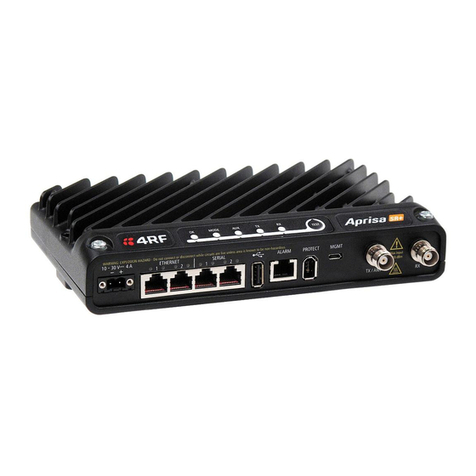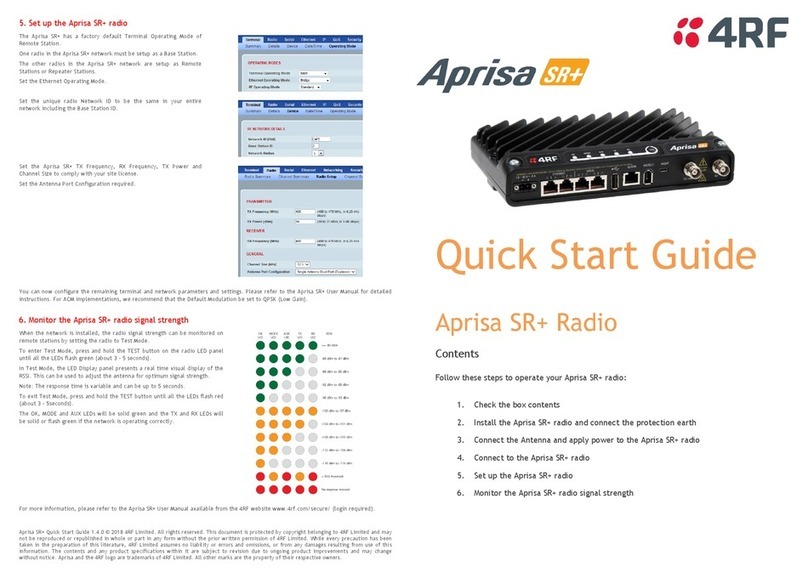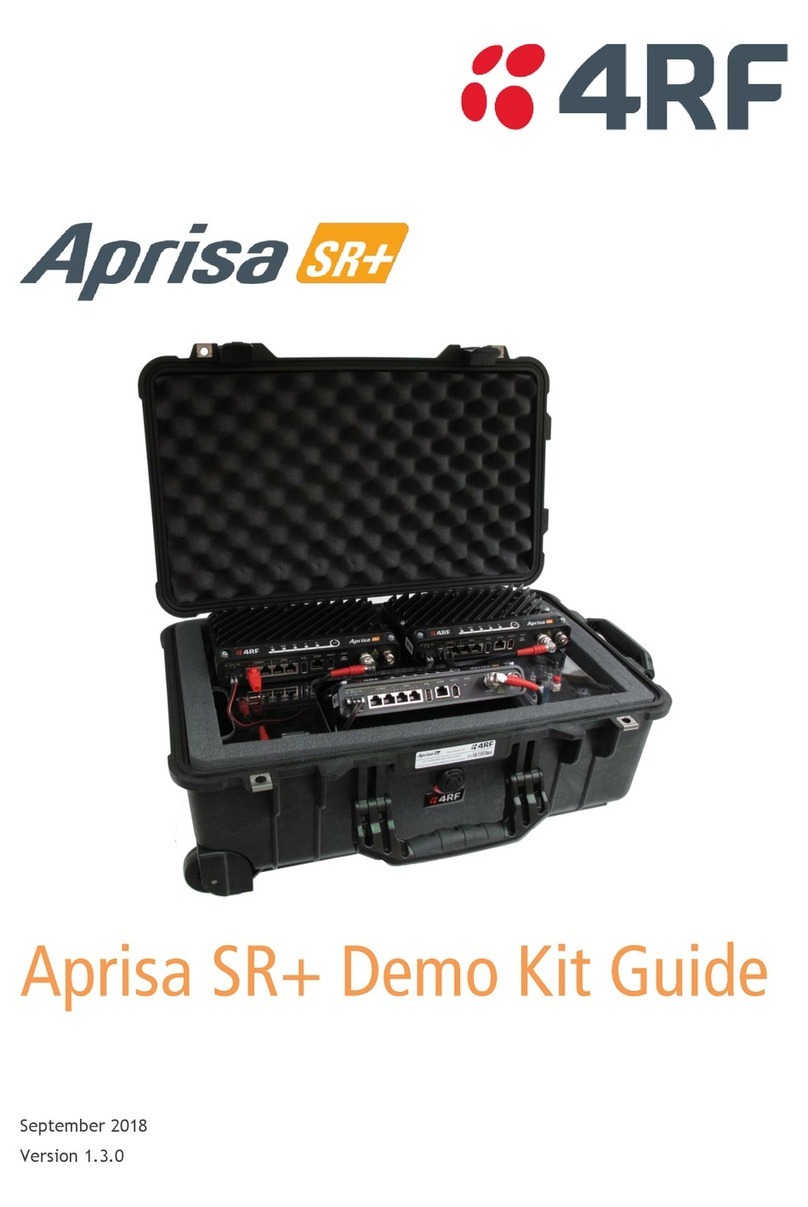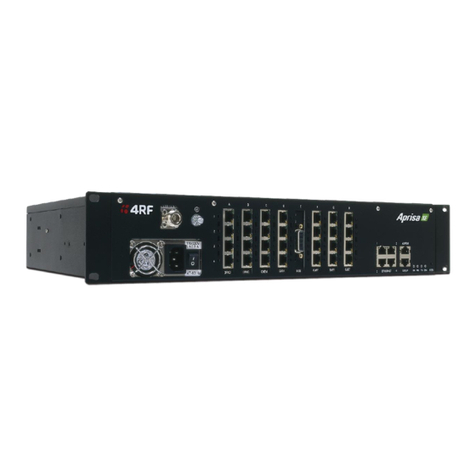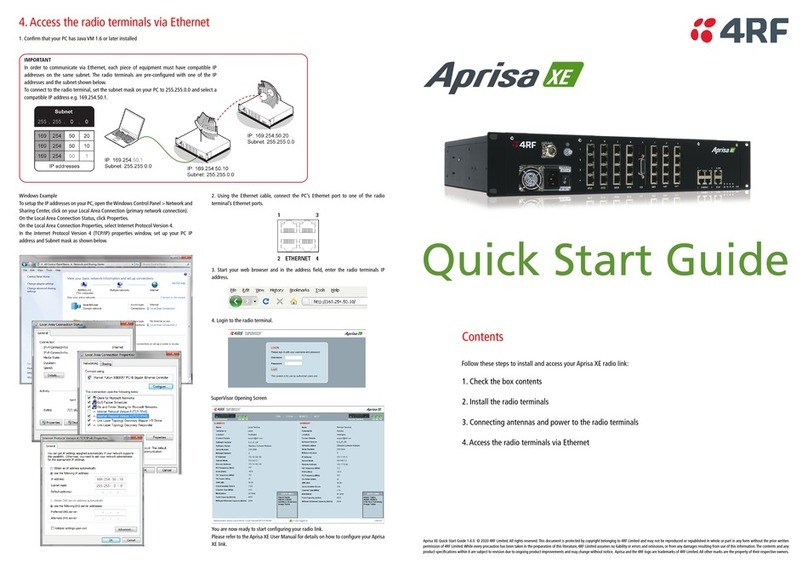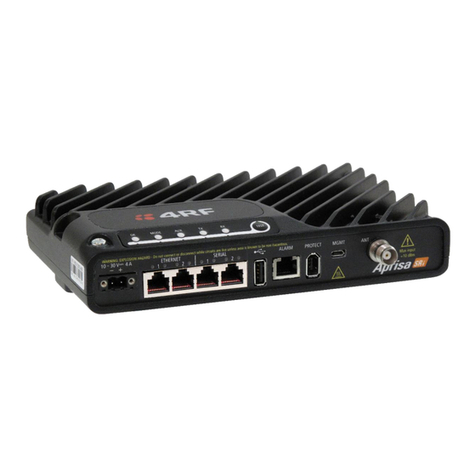3. Specifications ............................................................................ 21
RF Specifications ................................................................................21
ETSI Compliant............................................................................21
Frequency Bands ..................................................................21
Channel Sizes ......................................................................21
Transmitter.........................................................................22
Receiver ............................................................................24
Modem ..............................................................................24
Data Payload Security ............................................................24
Interface Specifications ........................................................................25
Ethernet Interface .......................................................................25
RS-232 Asynchronous Interface.........................................................25
Protection Switch Specifications.......................................................26
Power Specifications............................................................................27
Power Supply..............................................................................27
Power Consumption ......................................................................27
Power Dissipation ........................................................................28
General Specifications..........................................................................29
Environmental ............................................................................29
Mechanical ................................................................................29
Compliance................................................................................29
4. Management ............................................................................. 31
SuperVisor ........................................................................................31
Viewing the Aprisa SR+ Terminal Settings ............................................32
Configuring the Aprisa SR+ Terminal Details .........................................33
Configuring the Aprisa SR+ RF Network Details ......................................33
Configuring the Aprisa SR+ Radio Settings ............................................34
Command Line Interface .......................................................................35
SNMP ..............................................................................................35
LED Display Panel ...............................................................................36
Normal Operation ........................................................................36
Single Radio Software Upgrade.........................................................37
Network Software Upgrade .............................................................37
Test Mode .................................................................................37
5. Applications .............................................................................. 38
Basic point-to-multipoint application ........................................................38
Advanced point-to-multipoint application with repeater .................................39
Multi-interface point-to-multipoint application ............................................40
6. Architecture ............................................................................. 41
Product Description.............................................................................41
Physical Layer.............................................................................41
Data Link Layer / MAC layer ............................................................41
Channel Access ....................................................................41
Hop by Hop Transmission.........................................................42
Network Layer ............................................................................43
Packet Routing.....................................................................43
Security ...........................................................................................44
Product Architecture ....................................................................45
Aprisa SR+ Block Diagram ...............................................................46
